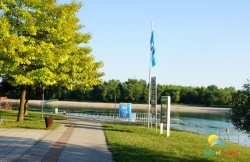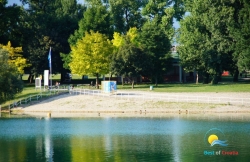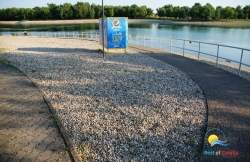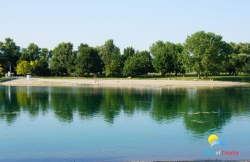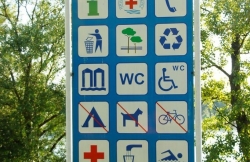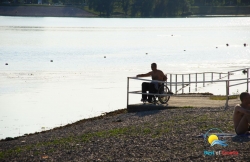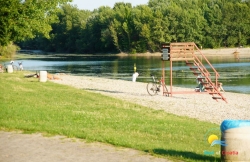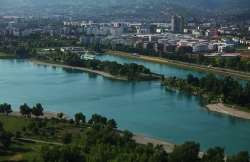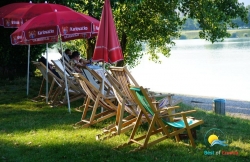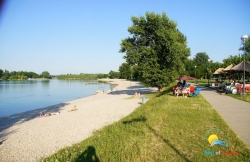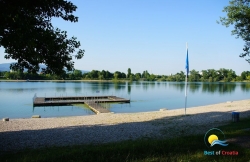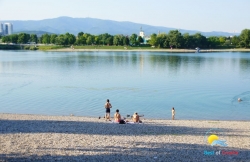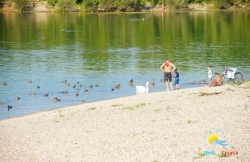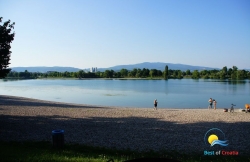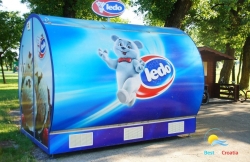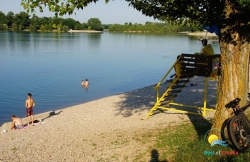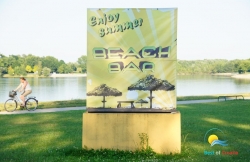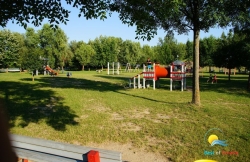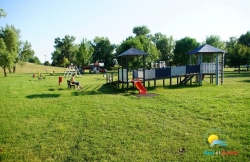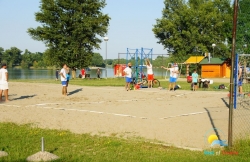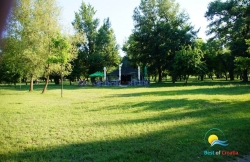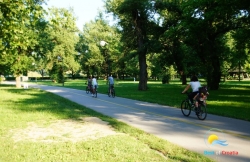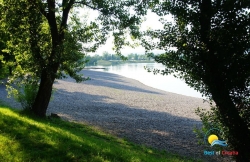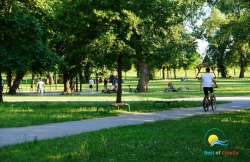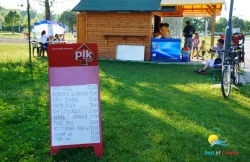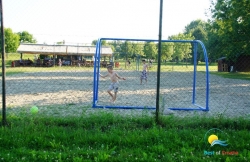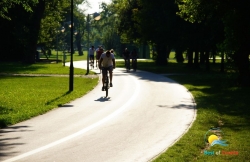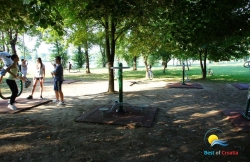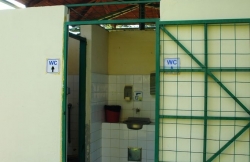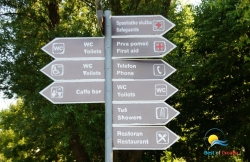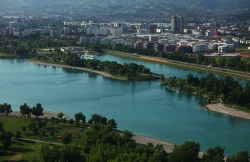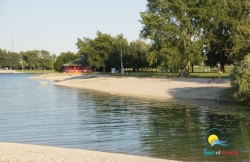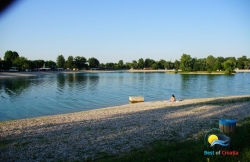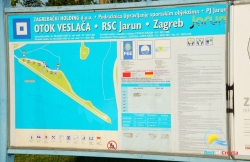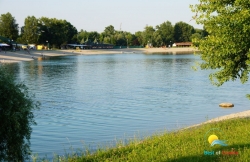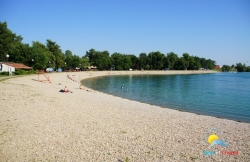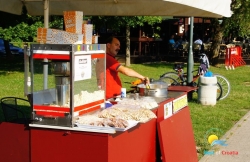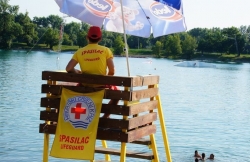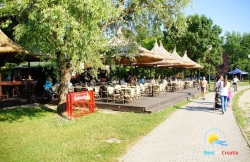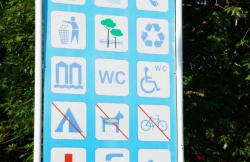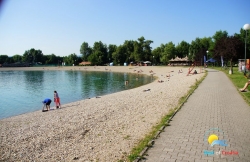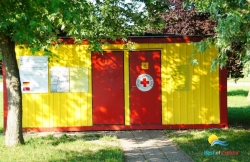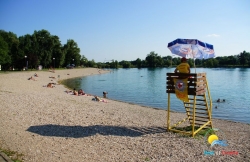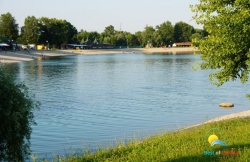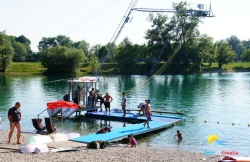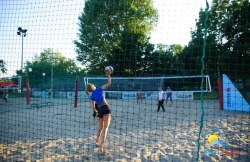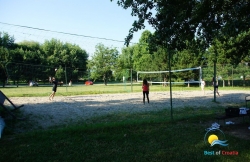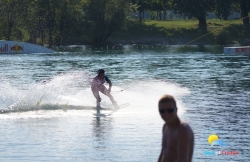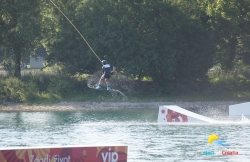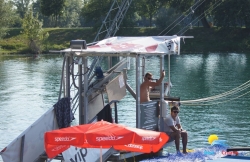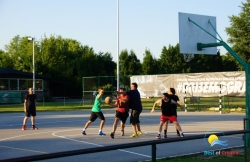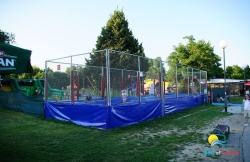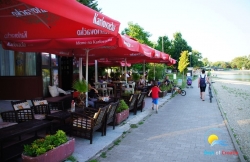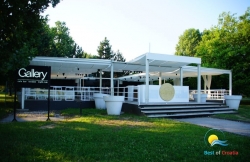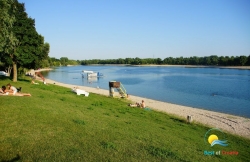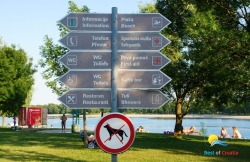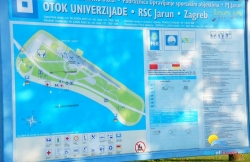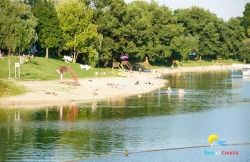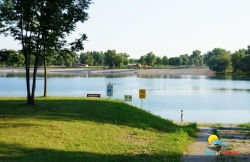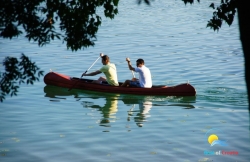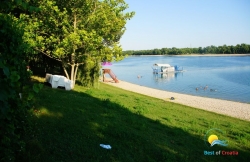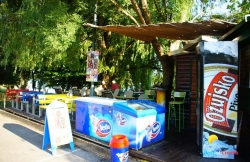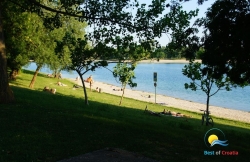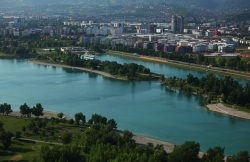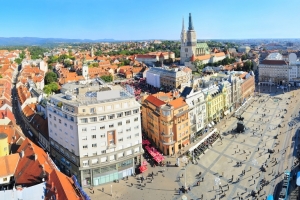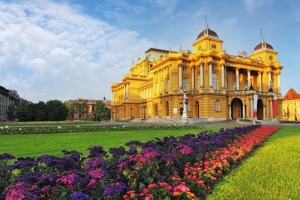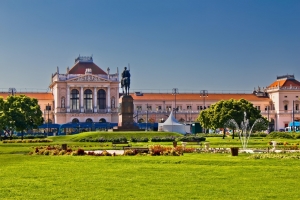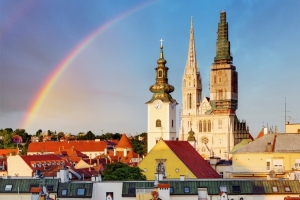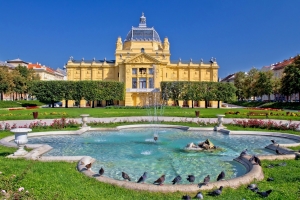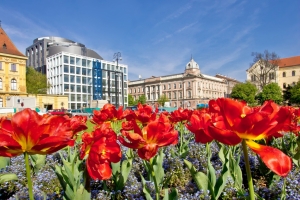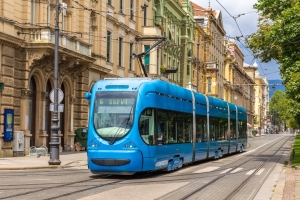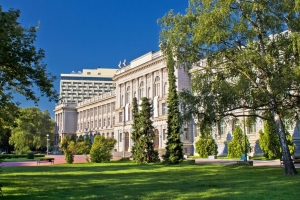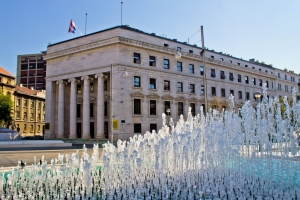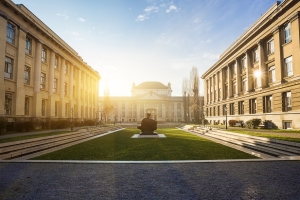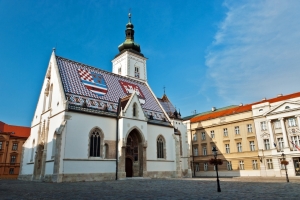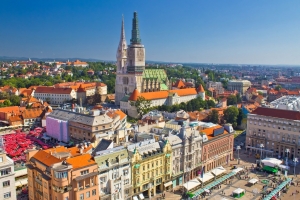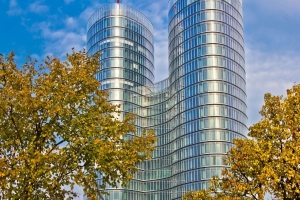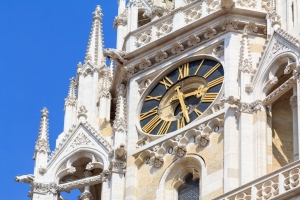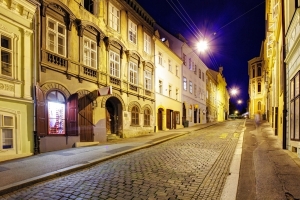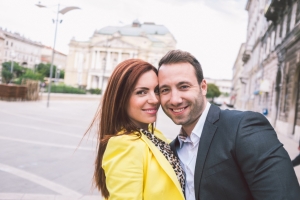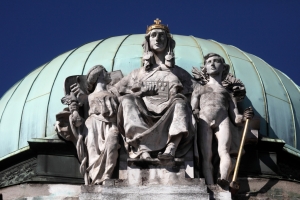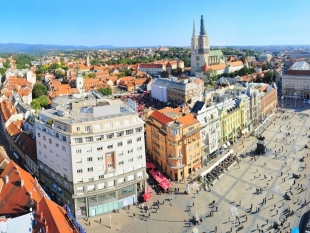


Beautiful, charming, modern and surprising are just a few words describing Zagreb, Croatia's capital and the largest city in the country. Whereas “big” should be seen in relation to the other Croatian cities and not internationally - Zagreb barely has 800,000 inhabitants. Still, the city lying on the Sava River at the foot of the Medvednica Mountains, sits in the shadow of great world heritage sites and popular Adriatic cities. This is surely in part due to its location - Zagreb lies in the continental climate center of the country, about 170 kilometers from the Adriatic Sea and from the millions of sun worshipers. Reaching this economic, political and cultural center of Croatia does not pose a problem, although: The city has an international airport and is connected with an extensive highway network making it easier to use long distance buses and trains to get to all parts of the country. Thus, this holiday center in the Kvarner region is just the particular place for a day or weekend trip or a stopover on the way home. Those arriving by train will have the opportunity to visit the wonderful park-like Tomislav Square, which adjoins to the north side of the main station. This square originates from the 19th century and displays fountains and flower beds, paths and the over-sized Tomislav monument in honor of the first Croatian king. Standing here you can just guess what else the city has to offer visitors: Carefully maintained roads and landmarks, a relaxed atmosphere and art and culture on every corner- right across from the Tomislav monument is the imposing art pavilion displaying its changing, high-profile exhibitions. Take pleasure in surprises? Under the square is the huge Importanne Shopping Mall, which has a selection of trendy brands and shops at least as big as the popular mile-long shopping street of Ilica in the lower district of town.
Zagreb is a relatively compact city divided into three major parts, which can be easily explored in a day, even on foot. A day of sightseeing is best started off in the lively, young lower district of Donji Grad, whose Historicism and Art Nouveau buildings strongly remind visitors of Vienna and Budapest. It is of no wonder, the Pannonian lowlands, and thus the former Austrian-Hungarian Empire are not far away! Besides its carefully maintained and restored stately buildings from the 19th century, Zagreb shares another similarity with the two Danube metropoles- the love of coffee and the traditional coffee-house culture. Those who do not find drinking their morning coffee in one of the tasteful hotels in the Austrian-Hungarian style appealing, will find, numerous cafés and coffee houses from elegant to stylish around the central Jelacic Square. Zagreb has a special feature for late risers, the Marenda. This is a traditional breakfast break from 10 to 11 o'clock in the morning whereby most cafés serve snacks and treats such as strudel filled with a soft cheese. The selection of pastries is particularly good in the cafés around the picturesque Dolac market square- very near to the Jelacic Square. Those who fail to hit the jackpot, can also try their luck at the market where typical local delicacies are served and can be eagerly devoured on the spot. Now well fed, we can hit the lower district, colloquially known as centar (center), for a day of idyllic exploring. Wide roads invite you to take a stroll, the shopping street of Ilica lures you in for extensive shopping, while great museums are there to be admired and dreamed about. Architecture fans are naturally, still quite smitten with the numerous buildings in the Historicism, Art Nouveau and Modernism styles, and then there are the curious, thirsty for knowledge visitors who have been seduced and linger by the many different artistic spots. For example, in the Mimara Museum on Roosevelt Square: This former school from the 19th century now houses one of the most important private art collections in the world, including works by artists such as Raphael, Canaletto, Rembrandt, Van Dyck, Goya, Holbein, Turner, Manet, Renoir and Degas. In the National Theater on Tito Square you will have the wonderful chance to revel in the golden glow of the past. It is the most beautiful building in the city, designed by the Viennese architects Fellner and Helmer, and has more to offer than just the artistic life to the highest level behind its bright yellow walls. Here, where Franz Liszt, Richard Strauss, Vivien Leigh and Laurence Olivier enraptured the masses, opulent rooms full with wonderful art treasures carry you off into art inspired dream worlds. Its counterpoint is the new Museum of Contemporary Art on Dubrovnik Avenue and south of the Sava River. The ultra-modern building from Igor Franic contains 14,500 square meters; not only plenty of space for top of the line exhibitions from contemporary local artists, as well as those from abroad, but also enough room for events, presentations and workshops. By the way: the National and University Library of Zagreb lying a little north of the Sava River is definitely worth a visit. Those who are a little less inspired by the most important collection of literature in the Croatian language, will at least be fascinated by its modern architecture. Tired of sightseeing? Recreation and relaxation is just what the magnificent parks of Zagreb, most of which lie along the Green Horseshoe, have in store for you. The city's green lung is lined by buildings in the Historicism style and attractions such as the Art Pavilion, the old campus and the National Theater. Here you can also breath in the fresh air of the botanical garden which lures guests in with its approximately 10,000 species of plants and artificial waters, its enchanted paths and exotic plants that are situated right in the middle of the city. Those who now have enough stamina for further exploration, are best off starting their way again in one of the two historic city centers, the Episcopal city of Kaptol. Strictly speaking, this area today belongs to the upper town district of Gornji Grad - but here is where the original historic city center was located. It is no wonder, then, that you will find the landmark of the city in Kaptol: the Cathedral of Zagreb. Pointing towards the heavens are the two towers from the "Cathedral of the Assumption of the Blessed Virgin Mary and Saints Stephen and Ladislaus" which is the tallest building in the country. This imposing Gothic building from the 13th century is surrounded by mighty fortress walls and towers, and is a remarkable gem with Baroque and neo-Gothic endowments. By the way, the Zagreb Eye Viewpoint is a viewing platform only a short walk away from the Cathedral and offers a great view over the Episcopal city with Cathedral, the Archbishop's Palace and the former curiae of the canons (but of course, the rest of the city too).
The cable car will take you from the shopping street of Ilica to the Strossmeyer promenade. The blue car will bring you directly into the upper town district of Gornji Grad. Here, where the Stone Gate commemorates the Great Fire of 1731, where daily a cannon shot is fired from the Lotrscak tower at 12 o'clock on the dot and where the Government manages from their offices at Banski dvori (Ban's Court), here is where Zagreb shows its romantic side. The old, largely preserved city center can only be explored on foot. Its small houses where craftsmen practice their trade and residential houses, its steep streets like the rustic Radiceva ulica street and its closed cityscape all encompass the town's unique flair. In the evening when the gas lamps are still lit by hand and the buttery yellow light gently brightens the narrow alleys and cobblestone streets, will you at last have the feeling that you have been on a journey back in time. The checkered history of this country's past is recalled by the centrally located Gothic Church of St. Mark. Particularly worth seeing at this church is the ancient crest of the opulent south portal with its masterfully crafted figures. The modern age has not completely passed over the upper town, where many museums and galleries make Gornji Grad a hot-spot for art in particular. For example, the Glyptotheque of the Croatian Academy of Sciences and Arts: This art gallery displays, in addition to permanent exhibitions from Croatian artists, contemporary art and is a popular venue for lectures and concerts. Even the Croatian Museum of Naive Art has started to focus on Croatian artists. Works which can be seen here encompass, inter alia, 80 representative works, including the works from Ivan Generalic created between 1930-1990. Museums today can also pursue a refreshingly different approach to history, such as the Museum of Broken Relationships in the baroque palace of Chelmno has proved. In 2011, it was awarded a special prize, the "European Museum of the Year Award". The exhibition brings together a whole slew of testimonials of past relationships and painful separations from around the world and explains the sometimes funny, sometimes tragic, and sometimes bizarre story behind each exhibit.
Of course, a young city like Zagreb, which is characterized by a lively student lifestyle in the lower town district in particular, is well worth discovering in the evening and at night. The popular nightlife mile strip of Tkalciceva begins at Dolac market and has a huge variety of restaurants and bars, pizzerias, cafés and clubs – here, you can dance the night away and not only in summer. Our tip: Do not miss the fantastic liquor in this region - some bars are specialized! Night owls and party-goers are especially drawn to the outskirts of the city, to Jarunsee. The places where the people of Zagreb recover on the excellent, Blue Flag beaches, do water sports or just relax in the sun during the day, are the same places where the hottest parties in town are lasting until the wee hours of the morning.
Apropos: Visitors should not miss the surrounding areas of Zagreb and the outskirts of the city. Well worth seeing, for example, is Mirogoj, a cemetery complex in the eastern part of Zagreb. Do not be put off by the word cemetery: Built in the 19th century it is more like a magnificent landscaped park and is home to the tombs of many renowned Croatian individuals. A very special treasure is the Maksimir Park that rises in the eastern part of the city. This is the largest park in Southern Europe and is one of the oldest parks on the continent. It contains numerous pavilions, gardens and sculptures, idyllic lakes and mighty oaks, and even the Zoological Garden of the Croatian capital. Fancy a trip to the region? Zagreb is located in the immediate vicinity of the Medvednica Mountains and has, therefore, excellent conditions for outdoor sports enthusiasts. Among the most popular destinations in the surrounding area include the nearby medieval castle of Medvedgrad and the Veternica cave which has traces of a prehistoric settlement.
closeBeaches
Location
Why Best of Croatia ?
- Best Price Guaranteed
- No booking fees
- Thousands of satisfied customers
- Numerous objects with direct-booking option
- Intelligent search function with numerous useful filter options
- Extensive travel guide with lots of pictures and videos over 500 pages
- Detailed beach guide with more than 700 beaches







 Best of Croatia
Best of Croatia









